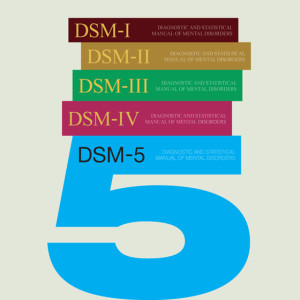 I have had two therapy sessions with a 24-year-old woman who was hospitalized six months ago for suicidal ideation. She has been stable since then and wants to use therapy to understand what led to her suicidal thoughts. She has given me permission to talk with her psychiatrist and her parents with whom she lives, and she suggested I contact the hospital to get their report of her stay. I usually like to keep the therapy between me and the client, but in this case I think information from these other sources might help.
I have had two therapy sessions with a 24-year-old woman who was hospitalized six months ago for suicidal ideation. She has been stable since then and wants to use therapy to understand what led to her suicidal thoughts. She has given me permission to talk with her psychiatrist and her parents with whom she lives, and she suggested I contact the hospital to get their report of her stay. I usually like to keep the therapy between me and the client, but in this case I think information from these other sources might help.
I agree that it might be necessary to expand beyond your client’s self report of history and symptoms in order to insure your client’s safety while she explores her past suicidal ideation. This question addresses the decisions inherent in conducting an initial assessment, which is discussed in Chapter 6 of my book. I’ll review whether and how to include information from other mental health providers, family members, and treatment records, after discussing the sources of information that come from your client sessions.
Therapy usually begins with a conversation between you and the client in which she tells you what difficulties are leading her to seek help. The initial phase of establishing a therapeutic alliance overlaps with doing an assessment of the client, so you develop a comprehensive picture of her life and circumstances that will guide your treatment approach. Your therapy sessions provide two sources of information about the client: her self-report and your observations. In the first two sessions, she has probably told you about her current concerns and symptoms, living circumstances, and relevant events from the past including her hospitalization. Whether you have been consciously aware of it or not, you are also observing her and noticing the nonverbal aspects of her presentation that are congruent or incongruent with her verbal presentation. Another aspect of the therapy sessions is the impact of the sessions on your own emotional state.
Client self-report and therapist observations are usually the primary source of assessment information, and sometimes are the only source. In this case, I would suggest expanding the client’s self-report by using one or more assessment measures. The Crpss-Cutting Symptoms Measure, contained in the Assessment section of the DSM- 5, is free and can be downloaded at https://www.psychiatry.org/psychiatrists/practice/dsm/educational-resources/assessment-measures. Your agency may have other measures that are relevant to her presenting issues or you can find assessment tools at http://www.integration.samhsa.gov/clinical-practice/screening-tools. It may be useful to compare the client’s narrative report in session with her self report on an objective assessment measure. Your treatment approach will be different if her scores on objective measures indicate greater risk than she has reported to you in the first two sessions.
In terms of the other sources you mention, consulting with her psychiatrist seems essential so that you can develop a collaborative relationship as treatment providers. As your client explores the sources of her suicidal ideation, her symptoms may temporarily increase and her medication needs may change. The psychiatrist can also share the client’s treatment history and response, which you can compare with your client’s report. Talking with your client’s parents is more complicated and needs further evaluation. I recommend postponing that conversation until you know more about your client’s current relationship with her parents, past events in the family, and general family dynamics. Over time you will begin to make inferences about these issues as you hear more about her perspective on their interactions. I would begin this exploration by asking what she expects her parents would tell you and how she would feel about you hearing that from them.
Last, your client has suggested that you read the hospital record. This may contain useful historical and clinical information, so I would recommend requesting it. Be aware that it may be more difficult to obtain a hospital record than to talk with the psychiatrist, depending on the procedures in place there. The discharge summary is the most useful clinical document, so you can ask for that rather than for the full record which will include notes from each nursing shift during her stay that are less relevant to her current status.
Combining these sources of information will result in a comprehensive assessment, which is especially important in cases with elevated risk. Supplementing the therapy sessions with self-report measures, information from another provider, treatment records, and possibly family members will enable you to be clearer in your treatment approach. Your overall goal will be to respond to the client’s desire to understand her past suicidal ideation while helping her maintain physical and emotional safety. If you’re interested in reading more about this and related issues, click here to order from Amazon or here to order from Routledge.





 I just had my first session with a 20-year-old woman who meets the DSM criteria for borderline personality disorder. Her emotions are very labile, her relationship with her boyfriend is unstable and she was fired from her job as a nanny recently because she was often late and had frequent crying spells. I think DBT would be a good treatment for her, but she immigrated from Thailand three months ago and I don’t know whether DBT has been used with Thai Americans.
I just had my first session with a 20-year-old woman who meets the DSM criteria for borderline personality disorder. Her emotions are very labile, her relationship with her boyfriend is unstable and she was fired from her job as a nanny recently because she was often late and had frequent crying spells. I think DBT would be a good treatment for her, but she immigrated from Thailand three months ago and I don’t know whether DBT has been used with Thai Americans.